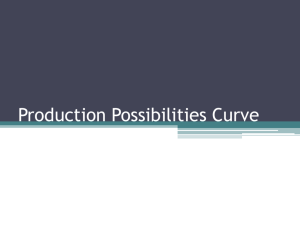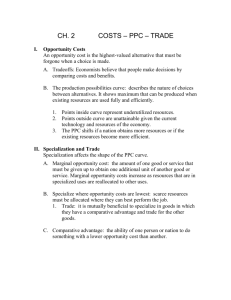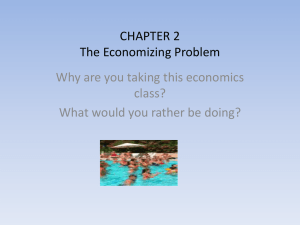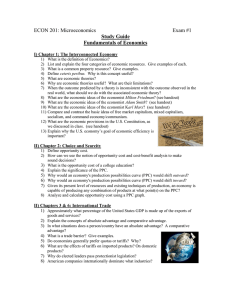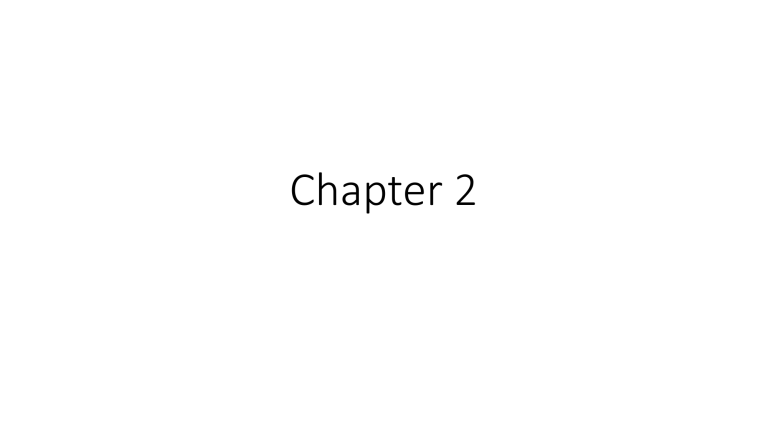
Chapter 2 Exchange and opportunity cost • Absolute advantage - one person has an absolute advantage over another if he or she takes fewer hours to perform a task than the other person • Comparative advantage - one person has a comparative advantage over another if his or her opportunity cost of performing a task is lower than the other person’s opportunity cost Comparative advantage Intro to production possibilities curve • Production possibilities curve (PPC) - A graph that describes the max amount of one good that can be produced for every possible level of production of the other good Attainable points and efficient points • Attainable point - any combination of goods that can be produced using currently available resources • Unattainable point - any combination of goods that cannot be produced using currently available resources • Inefficient point - any combination of goods for which currently available resources enable an increase in the production of one good without a reduction in the production of the other • Efficient point - any combination of goods for which currently available resources do not allow an increase in the production of one good without a reduction in the production of the other • Example: - 1 lb. of fish per hour - 3 lbs. of cocoanuts per hour - 8 hrs. per day • Attainable: A,B,C,D • Inefficient: D – he can use the remainder of the hours to collect more of the other resources • Efficient: any point on the PPC, A,B,C • Unattainable: E,F Opportunity costs in slope of PPC • Absolute value of the slope = OC of the good on the horizontal (x) axis • 1/absolute value of the slope = OC of the good on the vertical (y) axis • EX: * OC of 1 lb. of fish: 3 lbs. of coconuts * OC of 1 lb. of coconut is 1/3 of a lb. of fish Low hanging fruit principle • The shape of the production possibilities curve shown in Figure 2.6 illustrates the general principle that when resources have different opportunity costs, we should always exploit the resource with the lowest opportunity cost first. We call this the Low-HangingFruit Principle, in honor of the fruit picker’s rule of picking the most accessible fruit first. • The Principle of Increasing Opportunity Cost (also called the “LowHanging-Fruit Principle”): In expanding the production of any good, first employ those resources with the lowest opportunity cost, and only afterward turn to resources with higher opportunity costs. Factors that shift the economy’s PPC • Economic growth is an outward shift n the PPC. It can result from many different reasons - Improvement in knowledge or techs - New investments and equipment - Population growth (goes both ways) Comparative advantage and outsourcing • Outsourcing – replacing expensive labor with cheaper service overseas • The less rules there are in the job and the more face-to-face it needs, the less of a chance of computers outsourcing the people


